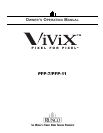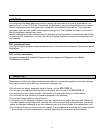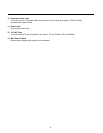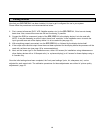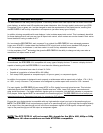
Congratulations on your purchase of the PFP-7/PFP-11 video processor with Vivix™ technology! This
processor is designed to maximize the image quality of your fixed-pixel display or rear-screen television while
adding an extra level of flexibility to your system. The PFP-7/PFP-11's Vivix™ processing techniques enable
this processor to be used with virtually any fixed-pixel display from Plasmas, LCD projectors, DLP projectors
and even D-ILA projectors, and will provide the most stunning image that your display can possibly deliver.
Vivix™ is a proprietary technique developed by Runco engineers to match the output resolution of the
processor precisely to the display it will be used with. This precision processing technique resolves all the
problems that conventional video processors have with fixed-pixel displays, which include pixel-tracking
artifacts (jagged lines, moiré, jerky motion, etc.), too much overscan (significant loss of image) and even
improper and disproportionate aspect ratios. The results of Vivix™ technology is an image that nearly rivals
that of a CRT, while providing three geometrically-correct aspect ratios on a 16:9 or a 4:3 screen.
In addition to fixed-pixel displays, the 480p, 540p, 600p and 720p output options of the PFP-7/PFP-11 is
designed specifically for rear-screen high-definition capable televisions. These RPTV's are quite flexible by
themselves, but often have lower-quality processors built in leaving the NTSC image much to be desired.
The PFP-7/PFP-11 will provide the best possible image from your RPTV, while providing all the other bene-
fits that the Vivix™ technology provides including aspect ratio control. Finally, the PFP-7/PFP-11 can be
configured for either an RGB or a Component output, making this processor compatible with virtually every
HD-capable RPTV on the market today.
The PFP-7/PFP-11 have many great features and benefits that make it a flexible, high-quality processor.
Its many benefits include:
• Vivix
TM
Technology, which maximizes image quality and flexibility of fixed-pixel displays.
• An adaptive 2-dimensional comb filter that greatly reduces artifacts when using a composite
video signal as an input.
• A Luma edge enhancement circuit makes the edges of objects appear sharper without the ringing
and noise increase associated with traditional sharpness circuits
• A Chroma edge enhancement circuit is included to compensate for lower chroma resolution found
in composite and S-video.
• Inverse Telecine (3:2 pulldown) detection and processing allows the scaler to almost completely
eliminate interlace artifacts associated with other scalers
• The controller can correctly scale anamorphic, letterbox and 4:3 formats to fit on a wide aspect-ratio
screen, and scale anamorphic formats on a 4:3 screen
• A pass-through connector is supplied for routing HDTV or computer graphics directly to the display.
• An RS-232 input is provided for easy integration into the automated home theater environment
• A TBC (Time Base Corrector) circuit is provided for unstable sources such as VCR’s.
• 12V outputs are provided for drop screens and screen masking.
• A simple 7-button remote controls all aspects of operation. One button source selection and aspect ratio
control is also provided via the remote control.
6
INTRODUCTION
General Description
Features and Benefits




